|
|
Post by topbilled on Feb 16, 2024 7:46:55 GMT
Day 16. Amedeo Nazzari was one of Italy’s most successful leading men in the 1940s and 1950s. His motion picture career gained traction in the late 1930s. He was nicknamed the Italian Errol Flynn, since he did share a resemblance with Flynn.
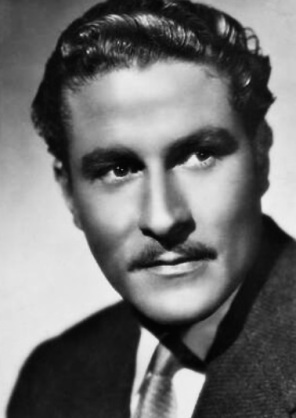
In the early days, he was typically cast in romantic comedies and as the war progressed, he transitioned into military roles. The Fascist leaders of Italy during that period were very fond of Nazzari. He was known for playing heroic yet sensitive men on screen. Political leaders extended open invitations to him to join their party, and if that had been an interest of his, he undoubtedly would have ascended the ranks of Italian government under Mussolini.
Nazzari was not comfortable with Mussolini’s regime. He remained diplomatic and cordial and told Mussolini he would not join the Fascist party, because he was too busy perfecting his art (as a screen actor). That seemed to get Mussolini off his back. After Mussolini and his cohorts were executed, Nazzari no longer had that pressure hanging over him.
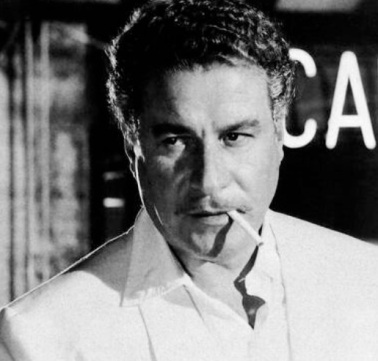
He continued to make motion pictures, and by the late 1940s, he was appearing less in comedies and more in neorealist films which had become popular after the war. But his greatest success would occur when he began to appear in a string of hit melodramas directed by a master of the genre, Raffaello Matarazzo. Indeed, Matarazzo is considered the Douglas Sirk of the Italian postwar cinema.
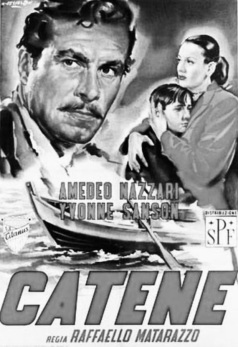
Matarazzo typically cast Nazzari opposite Yvonne Sanson (whom we will profile later this month). Nazzari was already in his early 40s, and Sanson was just 24 when they made their first film together in 1949, CATENE (which means CHAINS). In CATENE, they were a married couple divided by a secret which led to the death of a man blackmailing Sanson.

The killing occurred at the hands of Nazzari’s character, and he went on the run. However, the local community blamed Sanson’s character for allowing the blackmailer into their lives.
CATENE was a huge hit with audiences. It was estimated that one out of every eight Italians had seen CATENE (that’s significant when you factor in babies and invalids). Italian producers were eager to pair Nazzari and Sanson again. So throughout the 1950s, they made several more melodramas together, usually with Matarazzo directing them. All of these collaborations, except one, were huge moneymakers.
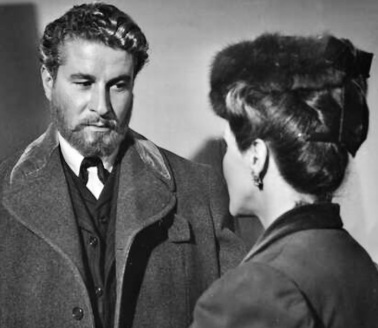
The most famous Nazzari-Sanson collaborations are I FIGLI DI NESSUNO (NOBODY’S CHILDREN) from 1952 and its sequel L’ANGELO BIANCO (THE WHITE ANGEL) from 1955. Interestingly, a sequel had not originally been planned, so the two stars went off and made some other films during the intervening period. But then Matarazzo was persuaded to craft a sequel, even though Sanson’s character had jilted Nazzari at the end of NOBODY’S CHILDREN to become a nun after the sad death of their illegitimate son. Yes, folks, this is what happens in Italian cinema where the characters’ passions are denied and they must suffer-suffer-suffer.
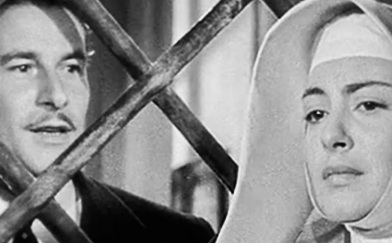
So how was Matarazzo going to reunite them on screen in a sequel if Sanson could no longer be with Nazzari romantically, since her character had become a nun? They couldn’t have her give up her religious vocation, because that would distress faithful Catholic moviegoers.
So Matarazzo put his thinking cap on, and he came up with a very clever solution, one that predates what Alfred Hitchcock did a few years later with Kim Novak’s character in VERTIGO. I will discuss THE WHITE ANGEL in more detail when we get to Sanson, since her dual role in THE WHITE ANGEL is truly phenomenal.
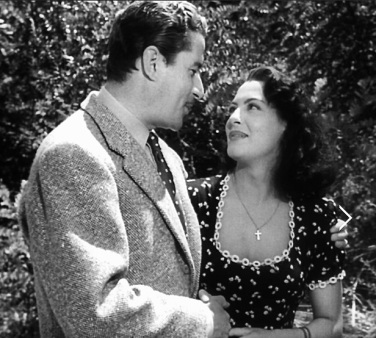
Off screen Nazzari was quite the ladies’ man. He did have a romantic relationship with Sanson when the cameras weren't rolling. They were a proper couple through most of the 1950s. But near the end of the decade, he finally renounced bachelorhood and was married (not to Sanson, but to another woman).
Nazzari continued to remain fairly active in the 1960s. Audiences still went to his movies, and he was still a bankable lead actor. By the early 1970s, his output slowed and he went into semi-retirement. He died in Rome in 1979. He left behind many fans who would always remember him for the immensely popular melodramas that he made with Yvonne Sanson.
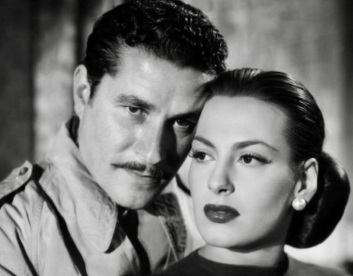
|
|
|
|
Post by jinsinna13 on Feb 16, 2024 14:27:18 GMT
I have never heard of Amedeo Nazzari until today. The first picture selected really captures the resemblance to Errol Flynn.
I like that he chose not to become a member of the Fascist Party. Good for him for not conforming and sticking to what he believed in.
|
|
|
|
Post by topbilled on Feb 16, 2024 15:00:05 GMT
I have never heard of Amedeo Nazzari until today. The first picture selected really captures the resemblance to Errol Flynn.
I like that he chose not to become a member of the Fascist Party. Good for him for not conforming and sticking to what he believed in.
In addition to his work with Yvonne Sanson, Nazzari also made highly regarded films with Gina Lollobrigida. And he was a second male lead in the Ava Gardner picture THE NAKED MAJA (1958) which was filmed in Italy. |
|
|
|
Post by NoShear on Feb 17, 2024 1:55:15 GMT
Day 15. Jane Wyatt was from a well-to-do east coast family (they were politically connected to the Roosevelts). However, she was removed from the upper crust social register, when it became public knowledge she was pursuing a career as an actress. That was a no-no in those circles. She didn’t get back on the social register until she married a prominent stock broker, whom she met one weekend at Franklin Roosevelt’s home. The marriage would last for 65 years.

Fortunately for us, Jane Wyatt didn’t do what the other high society debs did after marriage. She didn’t focus on serving tea and watercress sandwiches to her husband’s business acquaintances…instead, she continued to work as an actress.
Reminded me of Dina Merrill, a union of EF Hutton and Post, who was stricken from the social register following her marriage to Cliff Robertson if I'm not mistaken, TopBilled. |
|
|
|
Post by topbilled on Feb 17, 2024 16:46:58 GMT
Day 17. Helen Twelvetrees. There was much tragedy in the life of Helen Twelvetrees, one of the most intriguing actresses of the 1930s. The Brooklynite gal was born into a fairly affluent family (her father was an exec at a publishing company); and when she was a teen, she was enrolled in art schools where she learned drawing, painting and drama. Though she would also model, she became most known as an actress. In later years, after her film career ended, she took up painting again.

At age 10, her brother died in a fire, and I think the lingering sadness of his death informed the melancholy that she so easily projected in her screen roles. Typically she was cast as streetwalkers with a heart of gold, or the sassy independent chick, in precodes. Her first motion picture was at Fox, but she quickly moved over to Pathé. Her contract was absorbed by RKO a short time later.
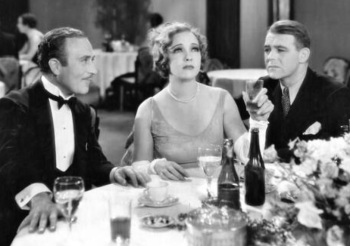
One of her biggest hits at RKO was MILLIE (1931) in which she played a naive young woman who married a wealthy man. As her career gained momentum, she was paired with important leading men.
She worked with Clark Gable in the western THE PAINTED DESERT (1931). Then she had a great role in BAD COMPANY (1931)
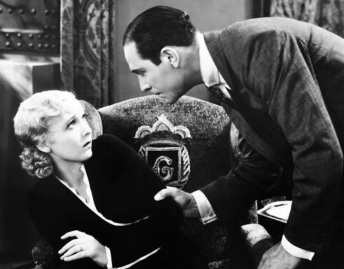
In this film, she was the troubled girlfriend of gangster Ricardo Cortez. Next up was PANAMA FLO (1932):
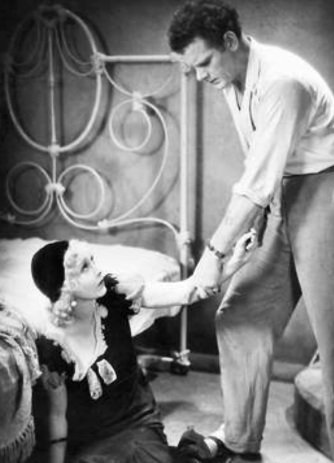
In PANAMO FLO, she was working with tough guy Charles Bickford, who couldn't decide if he loved her or not. The story was remade by the studio in 1939 with Lucille Ball taking over Twelvetrees’ role.
She was also in STATE’S ATTORNEY (1932) with John Barrymore, which was probably her most critically lauded vehicle:
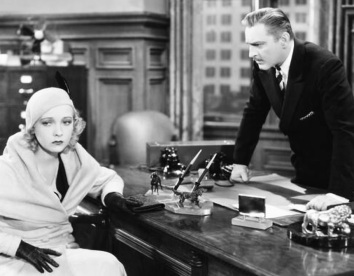
And there was a loan out to MGM that same year where she was teamed with Robert Young in UNASHAMED:

From 1931 to 1935, she was very busy, some years appearing in as many as five films per year. She later said that she was over-exposed, that stars have too much footage in movies, and the public grew tired of her. She thought if she’d been a featured player she might have had a longer movie career…but with a face like hers, she was never going to be assigned supporting parts.
By the mid-1930s she was done at RKO and freelancing. She found starring roles back at Fox, including NOW I’LL TELL with Spencer Tracy:
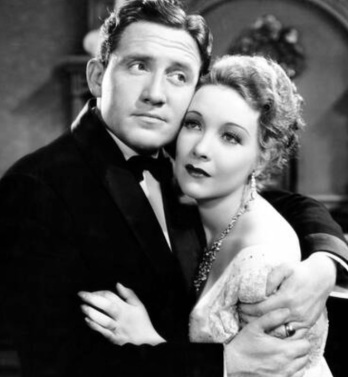
There was also another project at MGM, plus a good role in an Ellery Queen mystery at Republic. In THE SPANISH CAPE MYSTERY she teamed up with Donald Cook:

In 1936 she did the unexpected and went to Australia to make a horse racing drama down under. She had a particularly good time there, before returning to Hollywood:
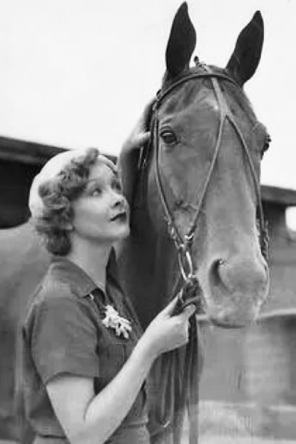
Her last three pictures costarred Buck Jones, with whom she enjoyed a very easy rapport. Two of these assignments were at Paramount. The last one, a Paramount melodrama called UNMARRIED (1939), is one of her best films with some of her best moments on screen.
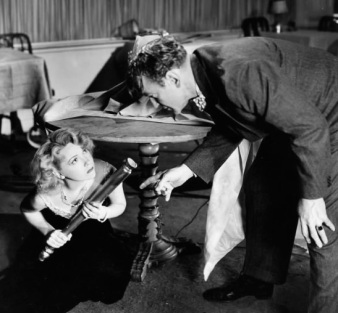
Helen Twelvetrees always projects a sincere yet fragile quality in her performances. She had been physically abused by her first husband. She had her only child with her second husband; that husband used her financially and turned out to be a stalker…she gave her son to relatives to raise. She did find some happiness with her last husband, a military official and traveled the world with him, painting landscapes of the places they visited.
She left the movies at the age of 30 in 1939, but she did continue to act on the stage. She had a role on Broadway in the 1940s, and she was in a production of A Streetcar Named Desire as Blanche. But by the late 50s she was in declining health and died from an overdose. Life was a bit too hard for her, but she did her best.
|
|
|
|
Post by NoShear on Feb 17, 2024 18:14:42 GMT
Day 17. Helen Twelvetrees. There was much tragedy in the life of Helen Twelvetrees, one of the most intriguing actresses of the 1930s. The Brooklynite gal was born into a fairly affluent family (her father was an exec at a publishing company); and when she was a teen, she was enrolled in art schools where she learned drawing, painting and drama. Though she would also model, she became most known as an actress. In later years, after her film career ended, she took up painting again.

At age 10, her brother died in a fire, and I think the lingering sadness of his death informed the melancholy that she so easily projected in her screen roles. Typically she was cast as streetwalkers with a heart of gold, or the sassy independent chick, in precodes. Her first motion picture was at Fox, but she quickly moved over to Pathé. Her contract was absorbed by RKO a short time later.

One of her biggest hits at RKO was MILLIE (1931) in which she played a naive young woman who married a wealthy man. As her career gained momentum, she was paired with important leading men.
She worked with Clark Gable in the western THE PAINTED DESERT (1931). Then she had a great role in BAD COMPANY (1931)

In this film, she was the troubled girlfriend of gangster Ricardo Cortez. Next up was PANAMA FLO (1932):

In PANAMO FLO, she was working with tough guy Charles Bickford, who couldn't decide if he loved her or not. The story was remade by the studio in 1939 with Lucille Ball taking over Twelvetrees’ role.
She was also in STATE’S ATTORNEY (1932) with John Barrymore, which was probably her most critically lauded vehicle:

And there was a loan out to MGM that same year where she was teamed with Robert Young in UNASHAMED:

From 1931 to 1935, she was very busy, some years appearing in as many as five films per year. She later said that she was over-exposed, that stars have too much footage in movies, and the public grew tired of her. She thought if she’d been a featured player she might have had a longer movie career…but with a face like hers, she was never going to be assigned supporting parts.
By the mid-1930s she was done at RKO and freelancing. She found starring roles back at Fox, including NOW I’LL TELL with Spencer Tracy:

There was also another project at MGM, plus a good role in an Ellery Queen mystery at Republic. In THE SPANISH CAPE MYSTERY she teamed up with Donald Cook:

In 1936 she did the unexpected and went to Australia to make a horse racing drama down under. She had a particularly good time there, before returning to Hollywood:

Her last three pictures costarred Buck Jones, with whom she enjoyed a very easy rapport. Two of these assignments were at Paramount. The last one, a Paramount melodrama called UNMARRIED (1939), is one of her best films with some of her best moments on screen.

Helen Twelvetrees always projects a sincere yet fragile quality in her performances. She had been physically abused by her first husband. She had her only child with her second husband; that husband used her financially and turned out to be a stalker…she gave her son to relatives to raise. She did find some happiness with her last husband, a military official and traveled the world with him, painting landscapes of the places they visited.
She left the movies at the age of 30 in 1939, but she did continue to act on the stage. She had a role on Broadway in the 1940s, and she was in a production of A Streetcar Named Desire as Blanche. But by the late 50s she was in declining health and died from an overdose. Life was a bit too hard for her, but she did her best. TopBilled, her projected melancholy you described made me think of some actresses who seemed to have tapped into some real sadness such as the troubled Inger Stevens - on display in both her roles for The TWILIGHT ZONE:   |
|
|
|
Post by topbilled on Feb 17, 2024 18:24:23 GMT
I suppose a good dramatic actress has to be able to pull an emotion from within herself in order to make a scene convincing. But Helen Twelvetress is always VERY convincing.
There's a wonderful scene in UNMARRIED (1939) where she has been belittled by Buster Crabbe's character for looking old before her time. She goes home and sits in front of a vanity mirror, without her hair pulled down and no makeup on-- a bold choice for a lead actress to make in a Hollywood film. As she looks at herself and studies what is reflecting back at her, the eyes tear up and you can tell in an instant she was stung by what Crabbe had said and she is now mourning the loss of her youth. It's just so powerful the way she allows her characters to be hurt on screen.
|
|
|
|
Post by NoShear on Feb 17, 2024 18:44:18 GMT
I suppose a good dramatic actress has to be able to pull an emotion from within herself in order to make a scene convincing. But Helen Twelvetress is always VERY convincing.
There's a wonderful scene in UNMARRIED (1939) where she has been belittled by Buster Crabbe's character for looking old before her time. She goes home and sits in front of a vanity mirror, without her hair pulled down and no makeup on-- a bold choice for a lead actress to make in a Hollywood film. As she looks at herself and studies what is reflecting back at her, the eyes tear up and you can tell in an instant she was stung by what Crabbe had said and she is now mourning the loss of her youth. It's just so powerful the way she allows her characters to be hurt on screen. The UNMARRIED scene reads as pretty painful to view, TopBilled... I'm biased when it comes to Buck Jones as I experienced his dream house when I was a child as previously mentioned, so I hold him in esteem, TopBilled, but I wonder if the "very easy rapport" between Helen Twelvetrees and Jones you described possibly was due at least in part to Buck Jones' said decency as a man. |
|
|
|
Post by topbilled on Feb 17, 2024 18:54:27 GMT
I suppose a good dramatic actress has to be able to pull an emotion from within herself in order to make a scene convincing. But Helen Twelvetress is always VERY convincing.
There's a wonderful scene in UNMARRIED (1939) where she has been belittled by Buster Crabbe's character for looking old before her time. She goes home and sits in front of a vanity mirror, without her hair pulled down and no makeup on-- a bold choice for a lead actress to make in a Hollywood film. As she looks at herself and studies what is reflecting back at her, the eyes tear up and you can tell in an instant she was stung by what Crabbe had said and she is now mourning the loss of her youth. It's just so powerful the way she allows her characters to be hurt on screen. The UNMARRIED scene reads as pretty painful to view, TopBilled... I'm biased when it comes to Buck Jones as I experienced his dream house when I was a child as previously mentioned, so I hold him in esteem, TopBilled, but I wonder if the "very easy rapport" between Helen Twelvetrees and Jones you described possibly was due at least in part to Buck Jones' said decency as a man.
As for the scene in UNMARRIED, that was my point exactly. She knows how to tap into emotional pain. It feels raw and honest. I think she's my favorite precode actress. It's interesting to see how her style evolved (or didn't evolve) in her last few motion pictures.
The other thing I find fascinating about her is that I expected her to have a background like Joan Crawford, up from poverty, where the hard knocks of life informed her acting style. But Helen Twelvetrees was not raised poor. I think she made bad choices with men.
The first husband tried to commit suicide and jumped from a window (after he had been beating her and his career was going nowhere). The police had the nerve to arrest her for the incident, falsely thinking she pushed him due to the abuse. When he woke up in the hospital he admitted the truth, how she had nothing to do with his decision to jump.
The only thing she kept from that marriage was the last name, since it was her known stage name. |
|
|
|
Post by NoShear on Feb 17, 2024 19:31:33 GMT
The UNMARRIED scene reads as pretty painful to view, TopBilled... I'm biased when it comes to Buck Jones as I experienced his dream house when I was a child as previously mentioned, so I hold him in esteem, TopBilled, but I wonder if the "very easy rapport" between Helen Twelvetrees and Jones you described possibly was due at least in part to Buck Jones' said decency as a man.
As for the scene in UNMARRIED, that was my point exactly. She knows how to tap into emotional pain. It feels raw and honest. I think she's my favorite precode actress. It's interesting to see how her style evolved (or didn't evolve) in her last few motion pictures.
The other thing I find fascinating about her is that I expected her to have a background like Joan Crawford, up from poverty, where the hard knocks of life informed her acting style. But Helen Twelvetrees was not raised poor. I think she made bad choices with men.
The first husband tried to commit suicide and jumped from a window (after he had been beating her and his career was going nowhere). The police had the nerve to arrest her for the incident, falsely thinking she pushed him due to the abuse. When he woke up in the hospital he admitted the truth, how she had nothing to do with his decision to jump.
The only thing she kept from that marriage was the last name, since it was her known stage name. Severely lacking the movie history which you possess, TopBilled, I'm no one to offer up observations of Helen Twelvetrees vis-a-vis her acting peers, but she seems to have been buried deep and forgotten beneath the Greta Garbos and Joan Crawfords. |
|
|
|
Post by topbilled on Feb 18, 2024 16:15:29 GMT
Day 18. James Dean.
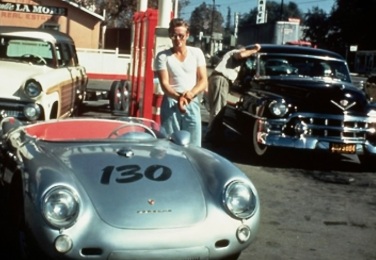
The day after James Dean’s death, director George Stevens was quoted as saying it was a “great tragedy…he had extraordinary talent.” Actress Elizabeth Taylor broke down in tears when she was told the news: “I can’t believe it…I’m just stunned,” she said.
Dean was killed on September 30th, 1955 when he was involved in a head-on collision 19 miles east of Paso Robles, California. It occurred at the intersection of State Highway 41 and U.S. 466. Several motorists witnessed the accident. Dean had been driving his new Porsche up from Los Angeles to the road races in Salinas, which were to be held on October 1-2.
He’d just purchased the fancy German sports car nine days earlier. He had to wait to use it, while he was still filming GIANT with Stevens and Taylor at Warner Brothers. This is because studio bosses wouldn’t let him race while working.
Having just completed his last scenes in the movie, he was now free to use the Porsche. He was anxious to take the car up to Salinas and enter it into the race. He also had a station wagon with a trailer, and initially, the plan was to put the Porsche on the trailer and drive the wagon. But Dean ended up having someone else drive the wagon, because his mechanic, an employee for Porsche, thought the new vehicle needed to be broken in before the big event.
The crash occurred at about 5:45 p.m. The car was said to have bounced up in the air, absorbing most of the brunt of the collision. It then turned on its side, as if doing a cartwheel, then flew down into a nearby gully. In an instant, the vehicle was totaled.
The mechanic was thrown from the wreck, landing beside one of the doors. Dean was trapped inside, his left foot caught between the clutch and the brake pedal (skid marks showed he tried to brake hard in an effort to avoid the oncoming car). Since his foot was stuck, he had to be cut from the vehicle.
He was still alive but unconscious. One of the witnesses was a woman with nursing experience, and she detected a weak pulse in his neck, but his neck was broken and it didn’t look good. He also had numerous lacerations along his body, many broken bones and internal injuries.
Highway patrolmen arrived at the scene within ten minutes. They arrived just after one of Dean’s pals, the guy driving the wagon, had removed him from the smashed up vehicle. The ambulance soon showed up, and Dean was placed into it alongside the mechanic.
The ambulance drove them to Paso Robles War Memorial Hospital, which was 28 miles away. Unfortunately, Dean was pronounced dead on arrival…at 6:20 p.m. The cause of death was described as resulting from the broken neck and internal injuries.
The mechanic, Rolph Wuetherich, age 27, experienced a fractured hip, body lacerations and a broken jaw. He was in serious condition but able to give a deposition to the police, before he was transported back to Los Angeles where he underwent surgeries to repair his hip and jaw.
Wuetherich suffered intense psychological problems after the accident. He continued to work for the Porsche company but in 1957 returned to Germany. He received abusive letters from fans who blamed him for James Dean’s death and threatened him.
The other car involved in the collision was driven by a Tulare man named Donald Turnupseed. According to police, Turnupseed had made a left turn on Highway 41 and was heading east, when he crashed into the Porsche. Turnupseed only suffered minor injuries…he received a bloody nose and facial cuts. He was present at an inquest that was held a week and a half later, and he was not charged with any crime, since Dean’s death was determined to have been accidental. However, Turnupspeed had to live with what happened for the rest of this life and he did not grant any further interviews about it.
James Dean had been born in Marion, Indiana in 1931. Besides GIANT, he also starred in EAST OF EDEN, which was based on a John Steinbeck story and ironically was set in Salinas. EAST OF EDEN was a hit with audiences in the spring of ‘55, and it catapulted him to stardom. Between EAST OF EDEN and GIANT, Dean had made REBEL WITHOUT A CAUSE over the summer, but it hadn’t been released at the time of his death.
Before working as an actor, James Dean attended Santa Monica College, then transferred to UCLA, where he majored in dramatics. He left UCLA for acting jobs in New York. While on the east coast, he found roles on stage and in live TV programs. His success in those productions led to work in Hollywood motion pictures. And the rest is history.
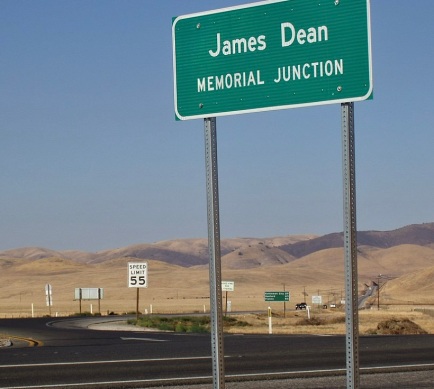
|
|
|
|
Post by christine on Feb 18, 2024 22:55:14 GMT
James Dean is of course remembered most for his roles in EAST OF EDEN, REBEL WITHOUT A CAUSE and GIANT (My personal favorite). However, one of his first film roles was in the 1952 film SAILOR BEWARE at Paramount. This film starred Dean Martin and Jerry Lewis. James had a one line speaking part in the middle of the movie - in a gym locker room where Dean was coaching Jerry on how to box (it's one of my favorite scenes in the picture}. Jerry was going to go into the ring with another sailor, of course more physically prepared than Jerry, and Dean was giving him pointers! James Dean was standing on the other side of the gym and says to the other sailor "That guy's a professional!" So Jerry ends up going into the boxing ring with a fellow twice his size and of course pulls his antics on him! I believe James Dean was 21 at the time. Just a sweet bit of film history!
|
|
|
|
Post by topbilled on Feb 19, 2024 0:13:43 GMT
James Dean is of course remembered most for his roles in EAST OF EDEN, REBEL WITHOUT A CAUSE and GIANT (My personal favorite). However, one of his first film roles was in the 1952 film SAILOR BEWARE at Paramount. This film starred Dean Martin and Jerry Lewis. James had a one line speaking part in the middle of the movie - in a gym locker room where Dean was coaching Jerry on how to box (it's one of my favorite scenes in the picture}. Jerry was going to go into the ring with another sailor, of course more physically prepared than Jerry, and Dean was giving him pointers! James Dean was standing on the other side of the gym and says to the other sailor "That guy's a professional!" So Jerry ends up going into the boxing ring with a fellow twice his size and of course pulls his antics on him! I believe James Dean was 21 at the time. Just a sweet bit of film history!
When I did the write-up for James Dean yesterday, I decided not to overly focus on the films because so much has been written about him in the few films he made. I realized that people don't think much about the day he died. They think about him having died young, but they don't really consider the details of what happened on September 30, 1955.
One thing that fascinated me as I read different news articles, including obituaries, was how many lives were connected on the day James Dean died. The survivors lived with it for the rest of their lives. Also, while it may sound a bit preachy, I think reading about how he died may help people better understand the importance of traffic safety. |
|
|
|
Post by I Love Melvin on Feb 19, 2024 0:28:44 GMT
He spent a productive period in New York as well as Hollywood, finding work on live television, like many young actors of his generation. It was great training for aspiring actors, like soap operas became later on, and New York was still the center of the television world at that point. My favorite of his is this one from 1953, about a young warehouse worker who benefits from the kindness of an older co-worker played by Gene Raymond.
|
|
|
|
Post by topbilled on Feb 19, 2024 14:48:54 GMT
Day 19. Billie Burke. Most people know she was married to Florenz Ziegfeld. But before that, she had spent her youth in London where her father was an entertainer. She found roles on the London stage in the early 1900s. By the 1910s she had returned to the U.S. and was appearing on Broadway, usually in musical comedies.
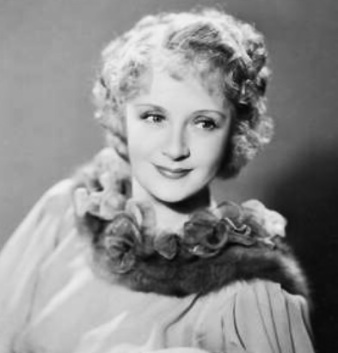
Billie Burke's success on the stage led to offers to make movies. Her first starring role in a silent film occurred in 1915, and she was an instant success. She would make a string of hit films over the next six years. Unfortunately, all but one of these are lost today...the only film from her silent phase that still exists is ARMS AND THE GIRL (1971) made for Paramount and costarring Thomas Meighan.
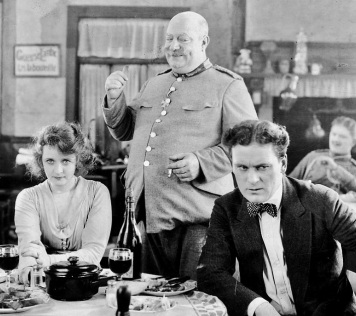
She took a break from movies for most of the 1920s, content to enjoy her life with Zeigfeld and raise their daughter. There were occasional returns to the stage, so she didn't retire completely. Ziggy's investments were wiped out by the stock market crash in '29. So Billie decided to return to film acting, as that was more lucrative than stage work.
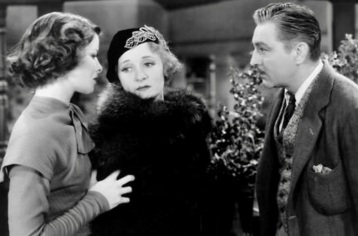
While making A BILL OF DIVORCEMENT (1932) for RKO, Ziggy died. She missed some filming, but quickly returned to Hollywood to finish her role in the picture opposite Katharine Hepburn and John Barrymore. She would stay in Hollywood.
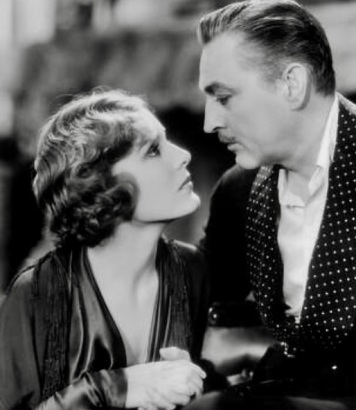
One of her next films had her at MGM, again costarring with Barrymore, this time in DINNER AT EIGHT (1933). She wasn't quite playing the scatterbrained characters she'd become known for, but the role in DINNER AT EIGHT was somewhat lighter than the dramatic material she played in A BILL OF DIVORCEMENT.
Another dramatic role had her playing a wealthy invalid in MGM's SOCIETY DOCTOR (1935). In the story, she is impressed with Chester Morris's skills as a doctor and offers to set him up in private practice.
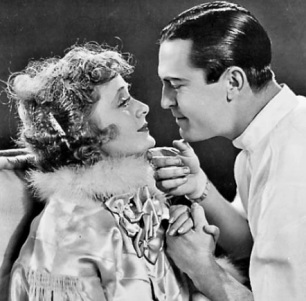
Though she did continue in dramatic roles, she began to appear more in comedies. At Columbia, she was Joan Bennett's amusing mother in SHE COULDN'T TAKE IT (1935).
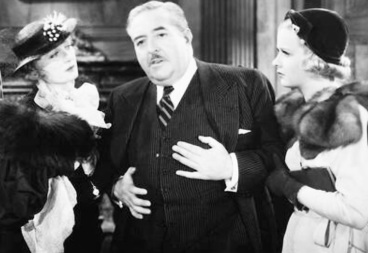
Another assignment at Columbia was CRAIG'S WIFE (1936) in which she played a sympathetic role opposite Rosalind Russell.

Billie Burke's zaniest roles were just around the corner. She was cast as Roland Young's wife in the first of three TOPPER movies. And they also teamed up for THE YOUNG IN HEART (1938).
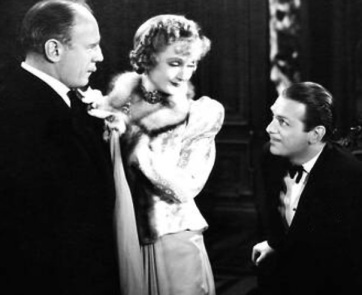
She then had a hilarious turn as the often befuddled matriarch in Hal Roach's MERRILY WE LIVE (1938) with Constance Bennett as her daughter.

Her most successful sound film happened the following year, in which she played Glinda the good witch in MGM's THE WIZARD OF OZ (1939). She was 55 when she played Glinda. Incidentally, this was not her first film in Technicolor. She had previously costarred in BECKY SHARP in 1935, which was made at RKO in Technicolor.
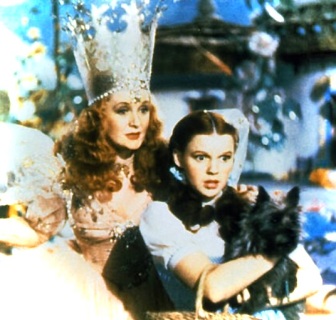
She was certainly typecast playing light and airy characters after her success as Glinda and after the screwball comedies she had made for Hal Roach. The early 1940s saw a continuation of such roles, which were always crowd-pleasers. Among the more memorable examples: her playing the daffy mother in Warner Brothers' THE MAN WHO CAME TO DINNER. But Warners also used her for a dramatic part in the melodrama IN THIS OUR LIFE (1942):
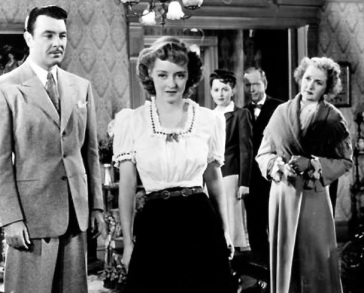
Film output slowed in the mid-40s. She had a hit with Republic's THE CHEATERS (1945) and she earned raves for her role as an ex-silent film actress in the comedy drama THE BACHELOR'S DAUGHTERS (1946). This film had her mothering the likes of Gail Russell, Jane Wyatt, Ann Dvorak & Claire Trevor. It was sort of a modern-day LITTLE WOMEN. At the beginning of THE BACHELOR'S DAUGHTERS, a clip from one of Billie Burke's old silent films is shown.
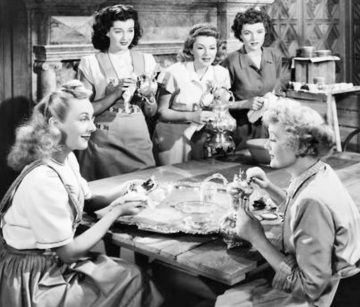
There were more roles at MGM in the late 40s and early 50s. These included FATHER OF THE BRIDE and its sequel. She was not playing Joan Bennett's mother this time, but instead playing Elizabeth Taylor's new mother-in-law who was supposed to be the same age as Joan Bennett, who was playing Taylor's mom.
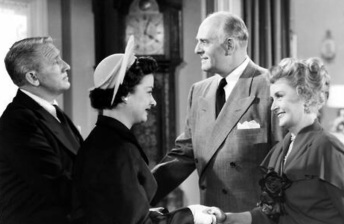
She didn't make any films during the mid-50s, but did return for THE YOUNG PHILADELPHIANS in 1959 and John Ford's SERGEANT RUTLEDGE in 1960. She did some television and there were occasional gigs on radio. The last ten years of her life were relatively quiet. When Billie Burke passed away in 1970, she was buried next to Florenz Ziegfeld in New York.
|
|











































